Monitoring of Corroded and Loosened Bolts in Steel Structures via Deep Learning and Hough Transforms
Abstract
1. Introduction
2. Image-Based Monitoring of Corroded Bolts
2.1. Workflow of Bolt Detection and Bolt Angle Estimation
2.2. Deep Learning-Based Bolt Detector
2.2.1. RCNN-based Classification of Clean and Corroded Bolts
2.2.2. Training of an RCNN-Based Bolt Detector
2.3. HLT-Based Bolt Angle Monitoring
2.3.1. Image Correction of Perspective Distortion
2.3.2. HLT-Based Bolt-Loosening Estimation
2.3.3. Damage Classification based on Upper Control Limit (UCL)
3. Lab-Scale Experimental Setup
4. Experimental Evaluation of the Bolt Monitoring Framework
4.1. RCNN-Based Bolt Detection under Uncertain Conditions
4.1.1. Bolt Identification under Various Perspective Distortions
4.1.2. Bolt Identification under Various Capture Distances
4.1.3. Bolt Identification under Various Light Intensities
4.2. HLT-Based Bolt Angle Estimation
4.2.1. Bolt-Loosening Estimation under Various Perspective Distortion
4.2.2. Bolt-Loosening Estimation under Various Image Capture Distances
4.2.3. Bolt-loosening Estimation under Various Light Intensities
5. Conclusions
- (1)
- The proposed RCNN-based deep learning method could accurately identify rusted bolts distinguished from clean ones under the perspective distortion less than 15°, the image capture distance less than 1.5 m, and the light intensity larger than 63 lux.
- (2)
- The HLT-based method could accurately detect a loosened bolt with small incipient rotation of 3.25° by using images captured under the perspective angle equal to or less than 10°, the capture distance of 1 m, and the light intensity of 93 lux. However, the accuracy of bolt angle estimation was significantly decreased under highly-distorted perspective angles (i.e., more than 20°), long-distanced captures (i.e., more than 2 m), and low-intensity lights (i.e., less than 54 lux).
- (3)
- The damage detection (i.e., bolt-loosening monitoring) of the corroded bolts was more difficult than the non-corroded bolts, which might be due to the effect of pollutants and dirt sticking on the edges of the corroded bolts. Also, the intensity of the stacked corrosion on the bolt surface changed over time, which resulted in the gradual decrease in brightness level of rust color and consequently caused the difficulty in identifying the corroded bolts.
Author Contributions
Funding
Conflicts of Interest
References
- Wang, T.; Song, G.; Liu, S.; Li, Y.; Xiao, H. Review of Bolted Connection Monitoring. Int. J. Distrib. Sens. Netw. 2013, 9. [Google Scholar] [CrossRef]
- Nikravesh, S.M.Y.; Goudarzi, M. A Review Paper on Looseness Detection Methods in Bolted Structures. Lat. Am. J. Solids Struct. 2017, 14, 2153–2176. [Google Scholar] [CrossRef]
- Pidaparti, R.M. Structural Corrosion Health Assessment using Computational Intelligence Methods. Struct. Health Monit. Int. J. 2016, 6, 245–259. [Google Scholar] [CrossRef]
- Ye, X.W.; Dong, C.Z.; Liu, T. A Review of Machine Vision-Based Structural Health Monitoring: Methodologies and Applications. J. Sens. 2016, 2016, 1–10. [Google Scholar] [CrossRef]
- Spencer, B.F.; Hoskere, V.; Narazaki, Y. Advances in Computer Vision-Based Civil Infrastructure Inspection and Monitoring. Engineering 2019, 5, 199–222. [Google Scholar] [CrossRef]
- Sun, L.; Shang, Z.; Xia, Y.; Bhowmick, S.; Nagarajaiah, S. Review of Bridge Structural Health Monitoring Aided by Big Data and Artificial Intelligence: From Condition Assessment to Damage Detection. J. Struct. Eng. 2020, 146, 04020073. [Google Scholar] [CrossRef]
- Yang, J.; Chang, F.-K. Detection of bolt loosening in C–C composite thermal protection panels: II Experimental verification. Smart Mater. Struct. 2006, 15, 591–599. [Google Scholar] [CrossRef]
- Blachowski, B.; Swiercz, A.; Pnevmatikos, N. Experimental verification of damage location techniques for frame structures assembled using bolted connections. In Proceedings of the 5th International Conference on Computational Methods in Structural Dynamics and Earthquake Engineering, Crete Island, Greece, 25–27 May 2015. [Google Scholar]
- Huynh, T.-C.; Dang, N.-L.; Kim, J.-T. Advances and Challenges in impedance-based structural health monitoring. Struct. Monit. Maint. 2017, 4, 301–329. [Google Scholar]
- Huynh, T.-C.; Kim, J.-T. RBFN-based temperature compensation method for impedance monitoring in prestressed tendon anchorage. Struct. Control. Health Monit. 2018, 25, e2173. [Google Scholar] [CrossRef]
- Huynh, T.-C.; Kim, J.-T. Quantification of temperature effect on impedance monitoring via PZT interface for prestressed tendon anchorage. Smart Mater. Struct. 2017, 26, 125004. [Google Scholar] [CrossRef]
- Park, J.-H.; Huynh, T.-C.; Choi, S.-H.; Kim, J.-T. Vision-based technique for bolt-loosening detection in wind turbine tower. Wind Struct. 2015, 21, 709–726. [Google Scholar] [CrossRef]
- Cha, Y.-J.; You, K.; Choi, W. Vision-based detection of loosened bolts using the Hough transform and support vector machines. Autom. Constr. 2016, 71, 181–188. [Google Scholar] [CrossRef]
- Nguyen, T.-C.; Huynh, T.-C.; Ryu, J.-Y.; Park, J.-H.; Kim, J.-T. Bolt-loosening identification of bolt connections by vision image-based technique. In Proceedings of the Nondestructive Characterization and Monitoring of Advanced Materials, Aerospace, and Civil Infrastructure 2016, Las Vegas, NV, USA, 20–24 March 2016. [Google Scholar]
- Kong, X.; Li, J. Image Registration-Based Bolt Loosening Detection of Steel Joints. Sensors (Basel) 2018, 18, 1000. [Google Scholar] [CrossRef]
- Ramana, L.; Choi, W.; Cha, Y.-J. Fully automated vision-based loosened bolt detection using the Viola–Jones algorithm. Struct. Health Monit. 2018, 18, 422–434. [Google Scholar] [CrossRef]
- Duda, R.O.; Hart, P.E. Use of the Hough transformation to detect lines and curves in pictures. Commun. Acm. 1971, 15, 11–15. [Google Scholar] [CrossRef]
- Canny, J. A computational approach to edge detection. IEEE Trans. Pattern Anal. Mach. Intell. 1986, 8, 679–698. [Google Scholar] [CrossRef]
- Gu, J.; Wang, Z.; Kuen, J.; Ma, L.; Shahroudy, A.; Shuai, B.; Liu, T.; Wang, X.; Wang, G.; Cai, J.; et al. Recent advances in convolutional neural networks. Pattern Recognit. 2015, 77, 354–377. [Google Scholar] [CrossRef]
- Zhao, X.; Zhang, Y.; Wang, N. Bolt loosening angle detection technology using deep learning. Struct. Control Health Monit. 2019, 26, e2292. [Google Scholar] [CrossRef]
- Atha, D.J.; Jahanshahi, M.R. Evaluation of deep learning approaches based on convolutional neural networks for corrosion detection. Struct. Health Monit. 2017, 17, 1110–1128. [Google Scholar] [CrossRef]
- Cha, Y.-J.; Choi, W.; Suh, G.; Mahmoudkhani, S.; Büyüköztürk, O. Autonomous Structural Visual Inspection Using Region-Based Deep Learning for Detecting Multiple Damage Types. Comput. Aided Civ. Infrastruct. Eng. 2018, 33, 731–747. [Google Scholar] [CrossRef]
- Huynh, T.-C.; Park, J.-H.; Jung, H.-J.; Kim, J.-T. Quasi-autonomous bolt-loosening detection method using vision-based deep learning and image processing. Autom. Constr. 2019, 105, 102844. [Google Scholar] [CrossRef]
- Girshick, R.; Donahue, J.; Darrell, T.; Malik, J. Rich feature hierarchies for accurate object detection and semantic segmentation. In Proceedings of the IEEE Conference on Computer Vision and Pattern Recognition, Columbus, OH, USA, 23–28 June 2014; pp. 580–587. [Google Scholar]
- Uijlings, R.R.J.; Van de Sande, A.E.K.; Gevers, T.; Smeulders, M.W.A. Selective Search for Object Recognition. Int. J. Comput. Vis. 2012, 104, 154–171. [Google Scholar] [CrossRef]
- Krizhevsky, A.; Sutskever, I.; Hinton, E.G. ImageNet Classification with Deep Convolutional Neural Networks. Adv. Neural Inf. Process. Syst. 2012, 25, 84–90. [Google Scholar] [CrossRef]
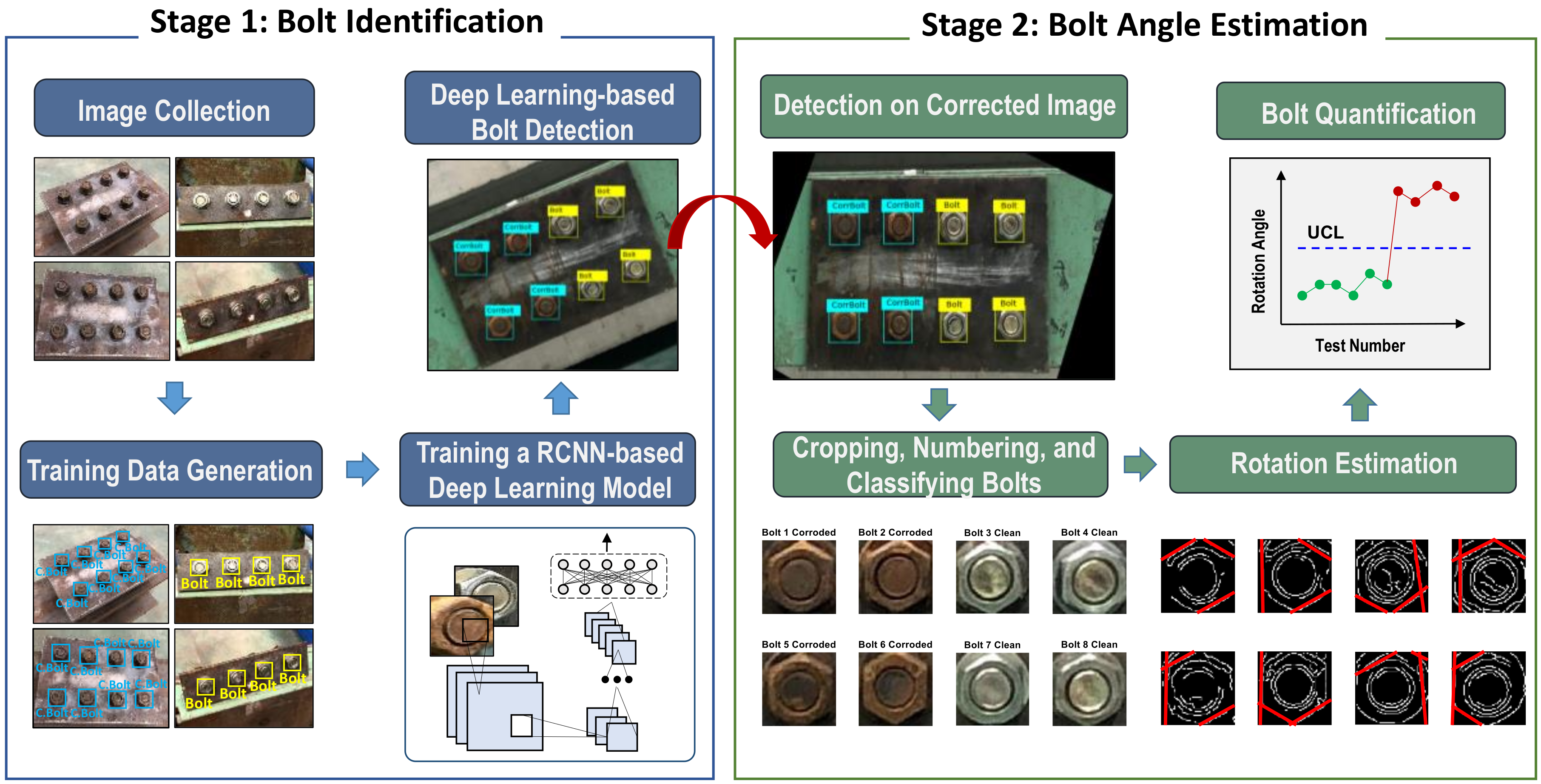



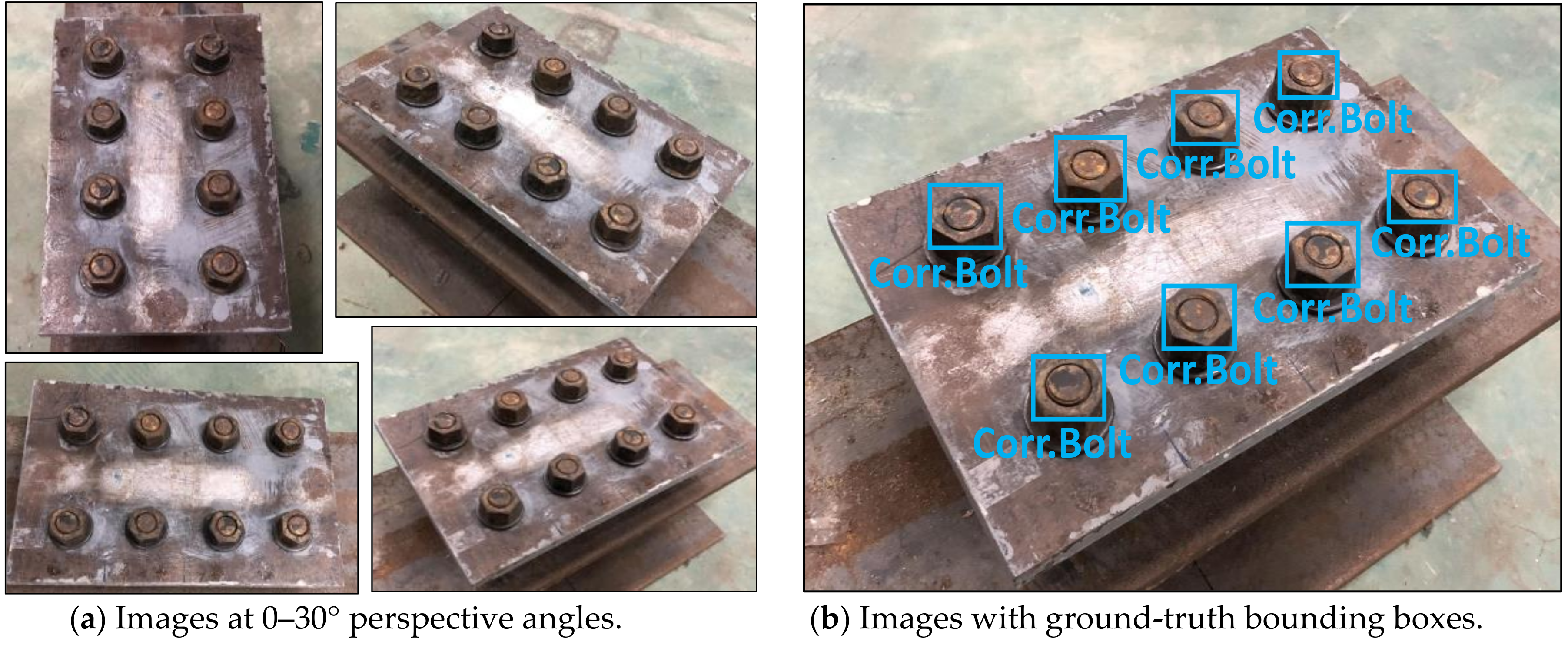
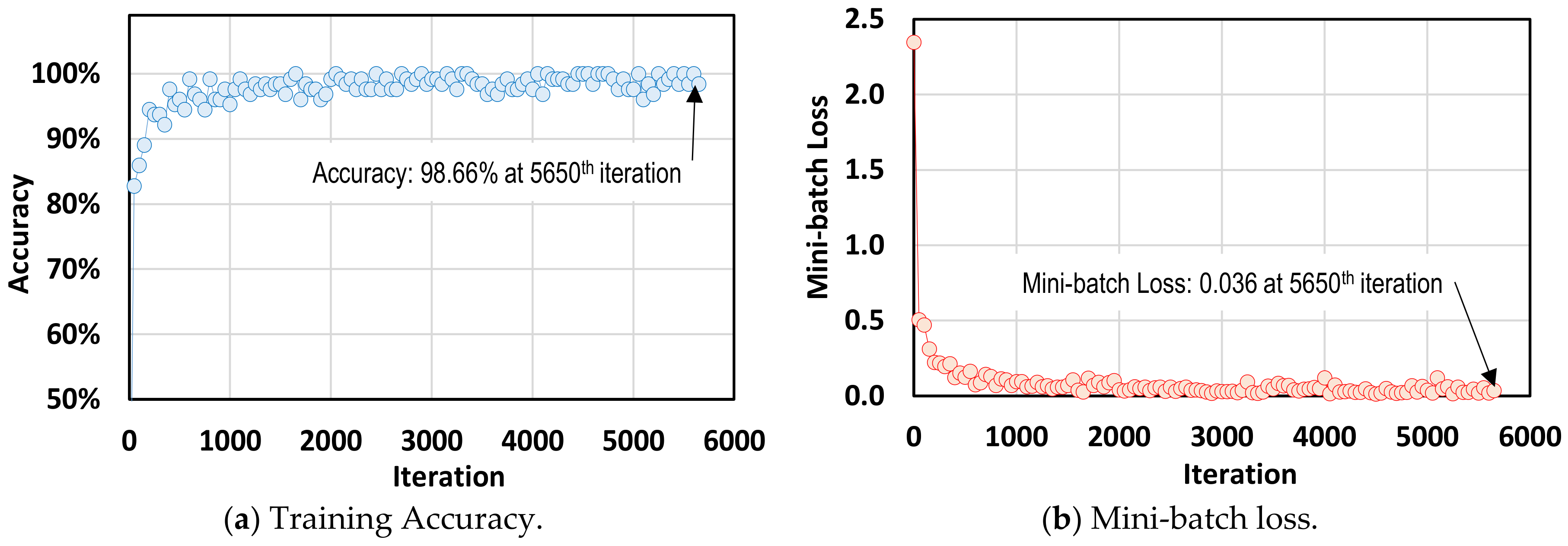
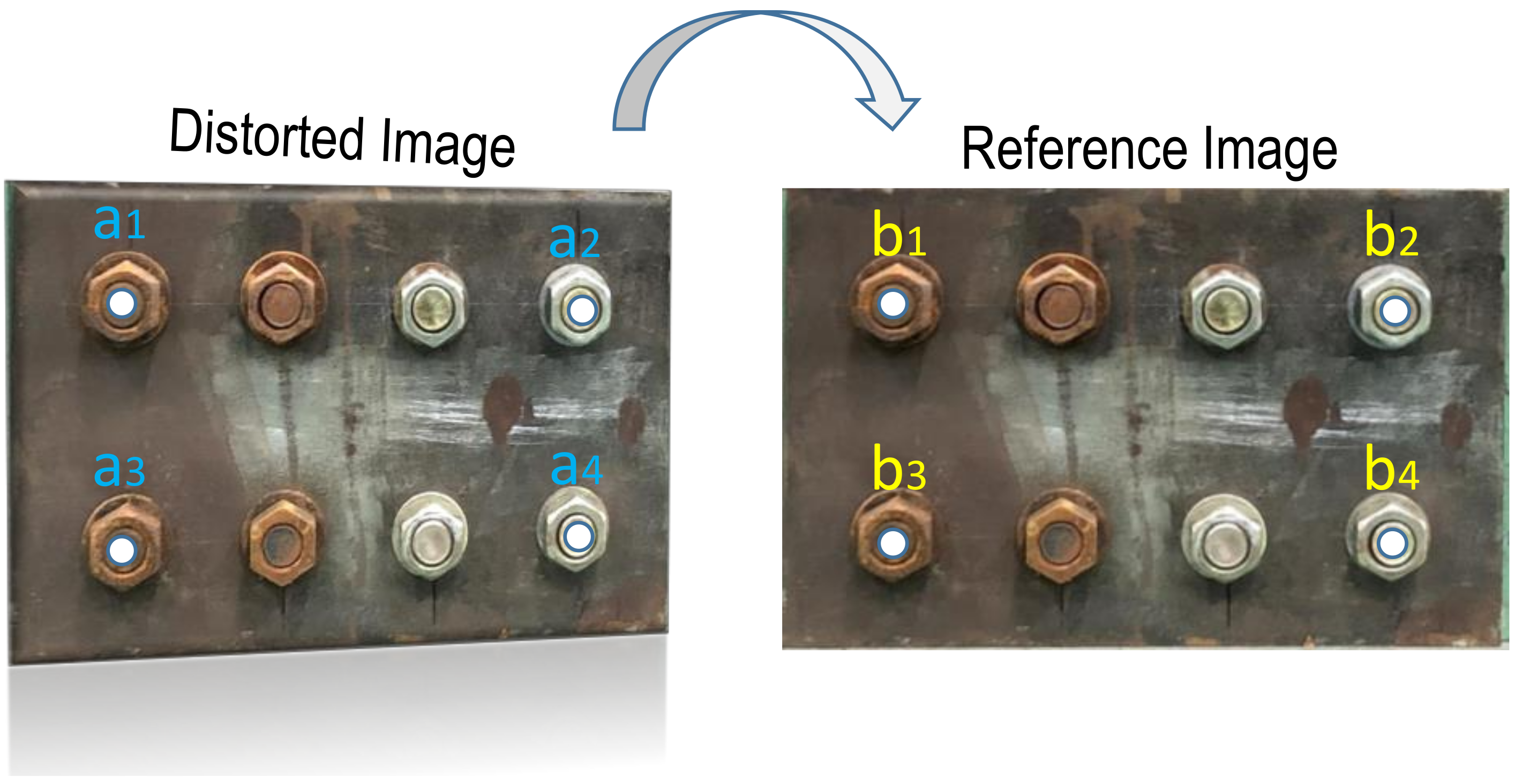
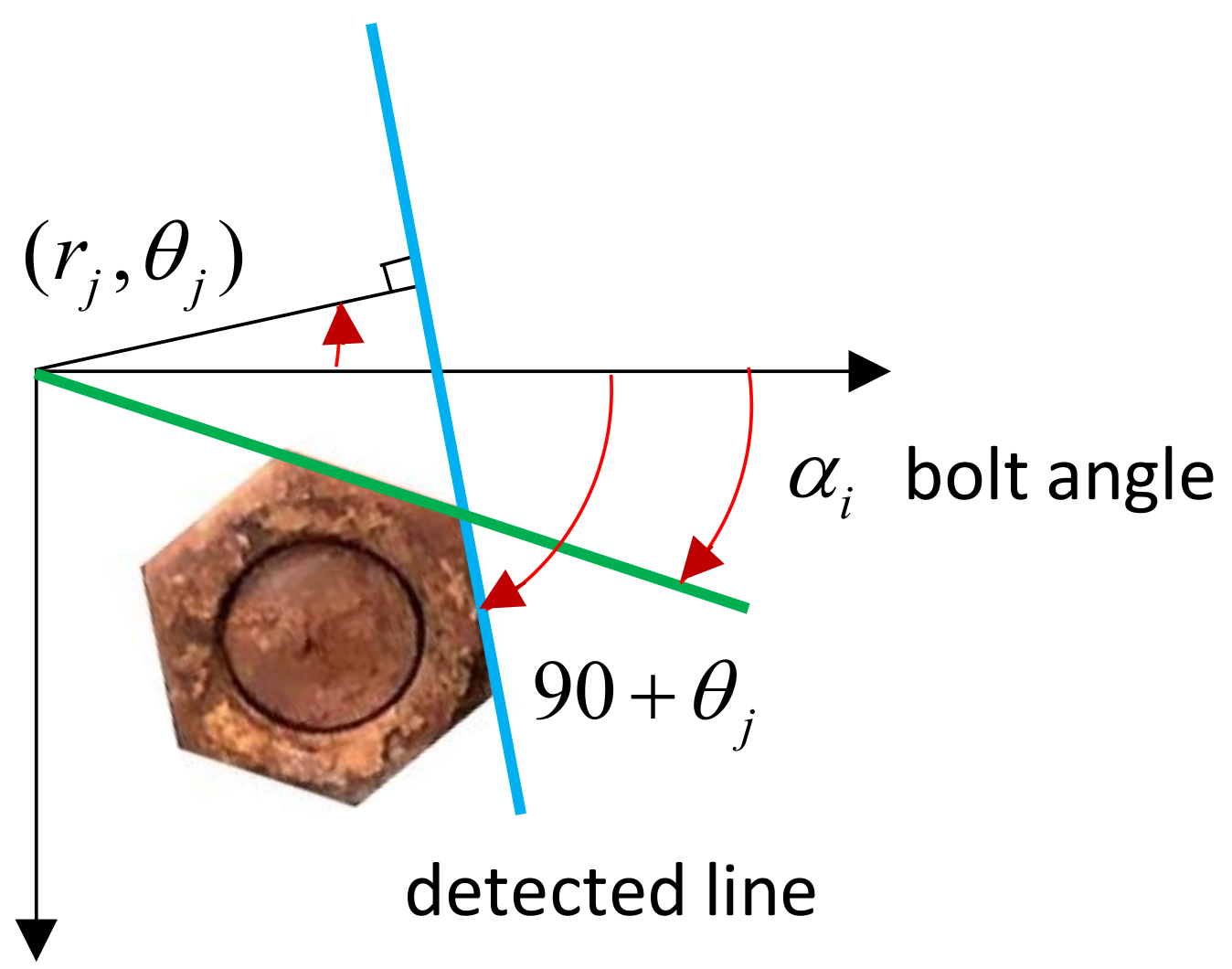

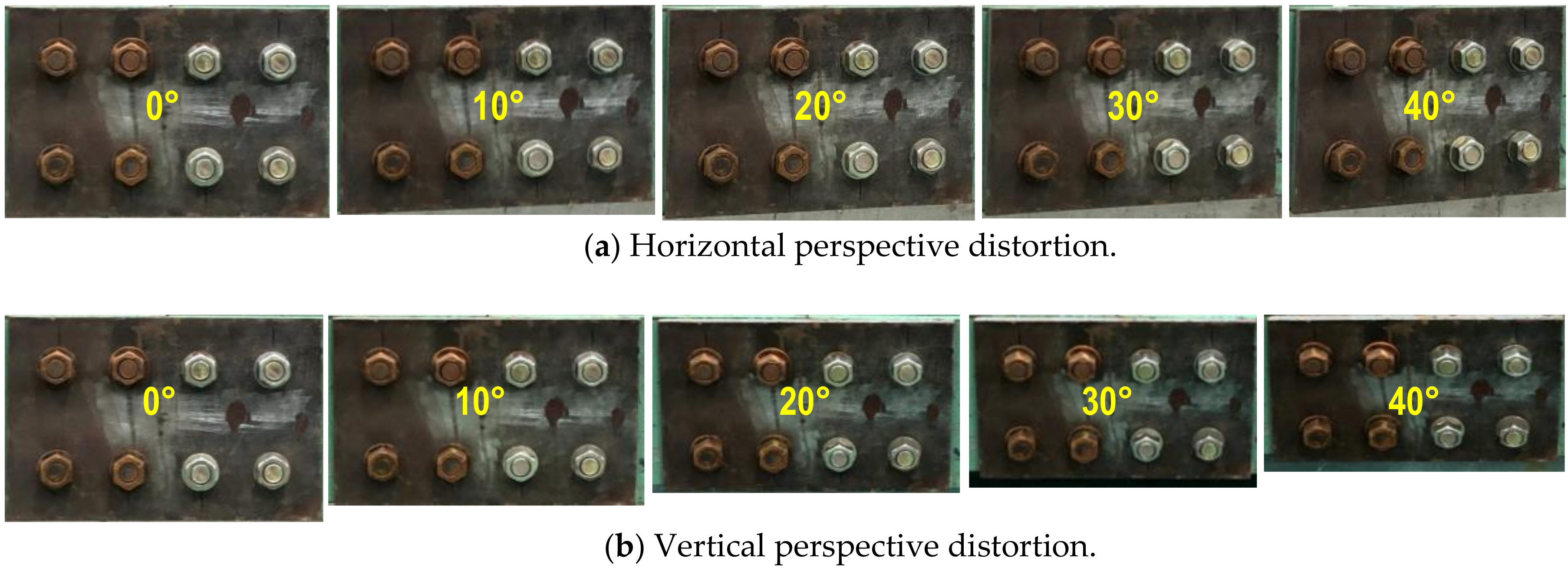


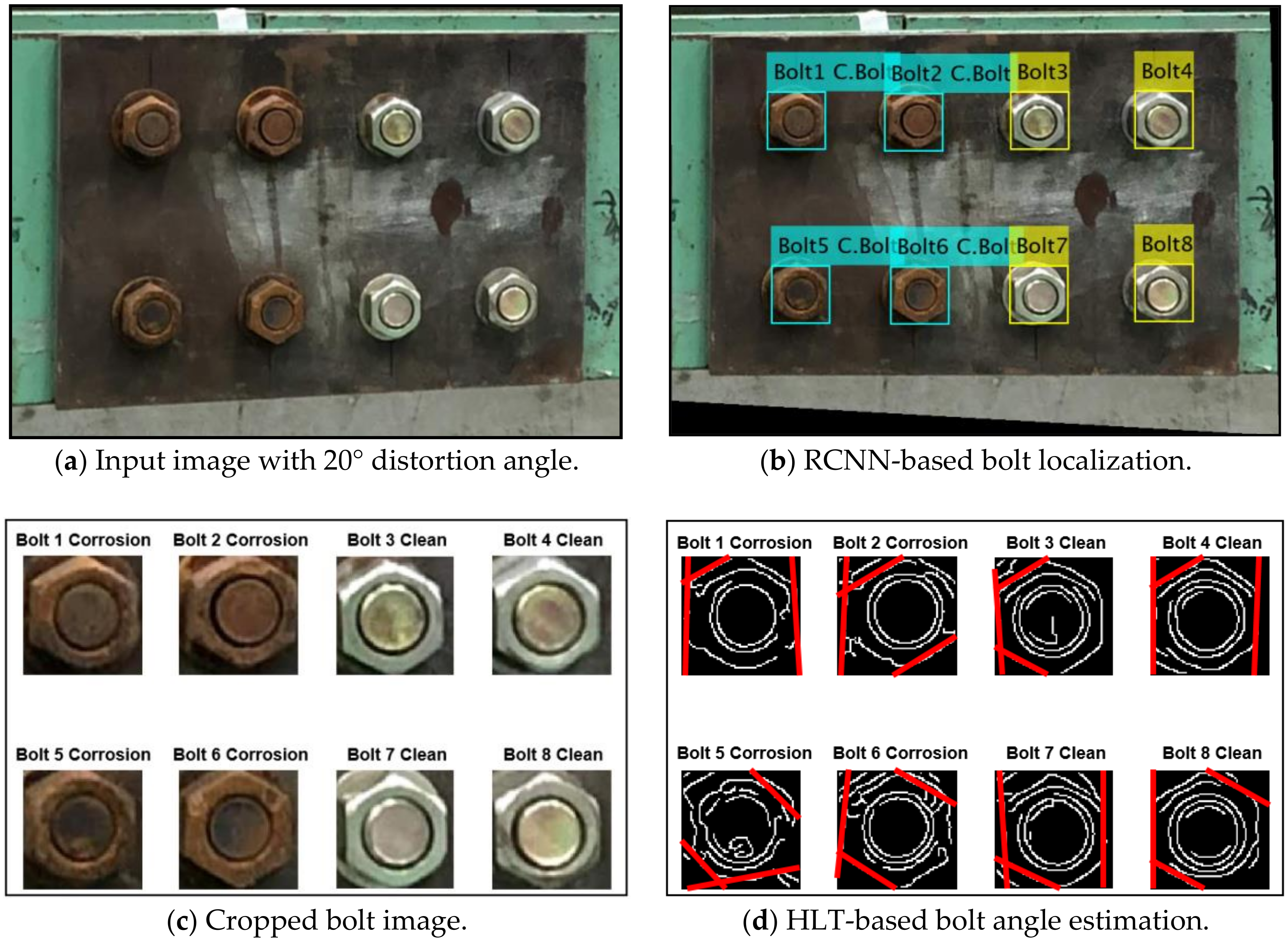

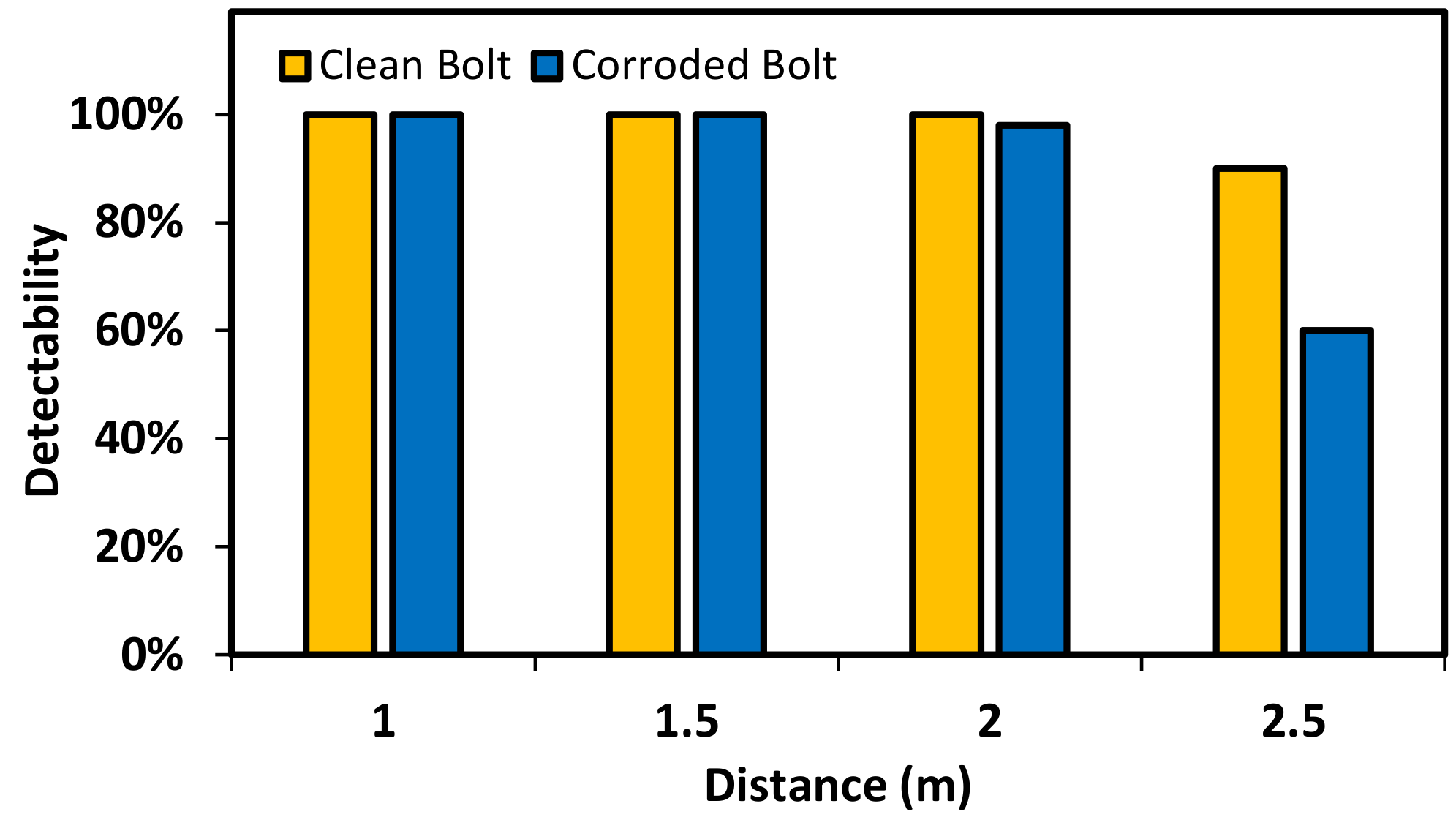



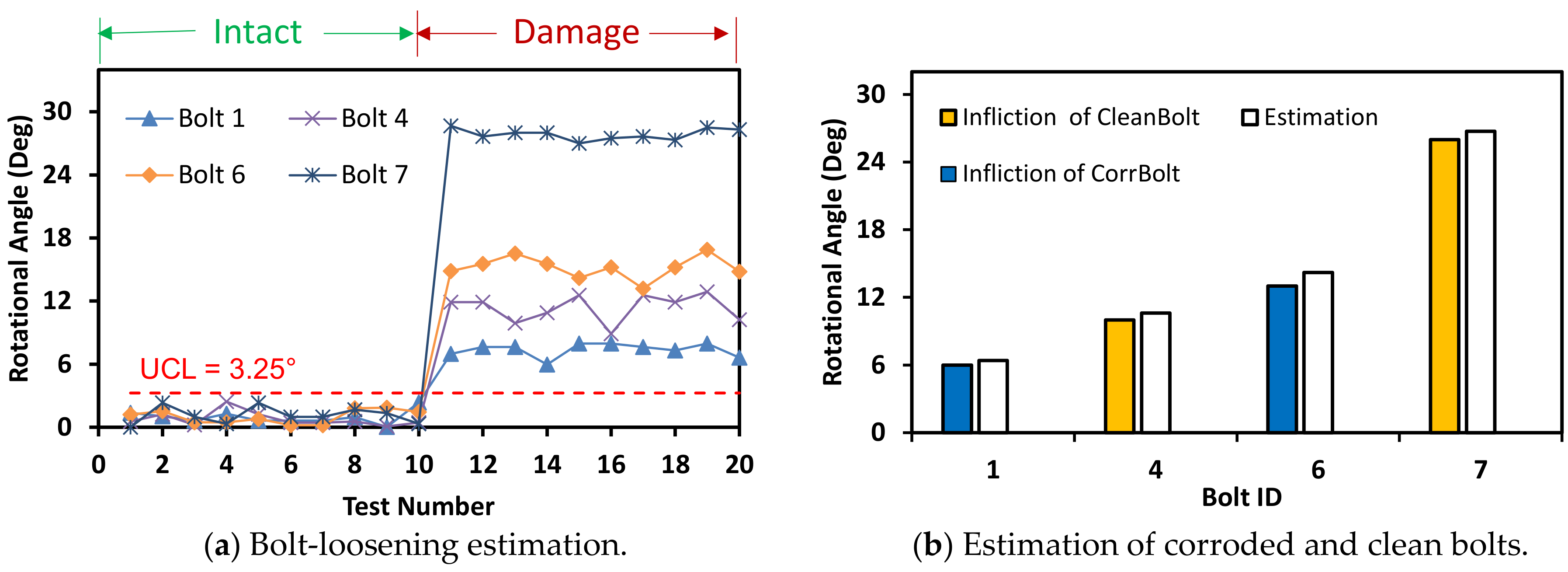



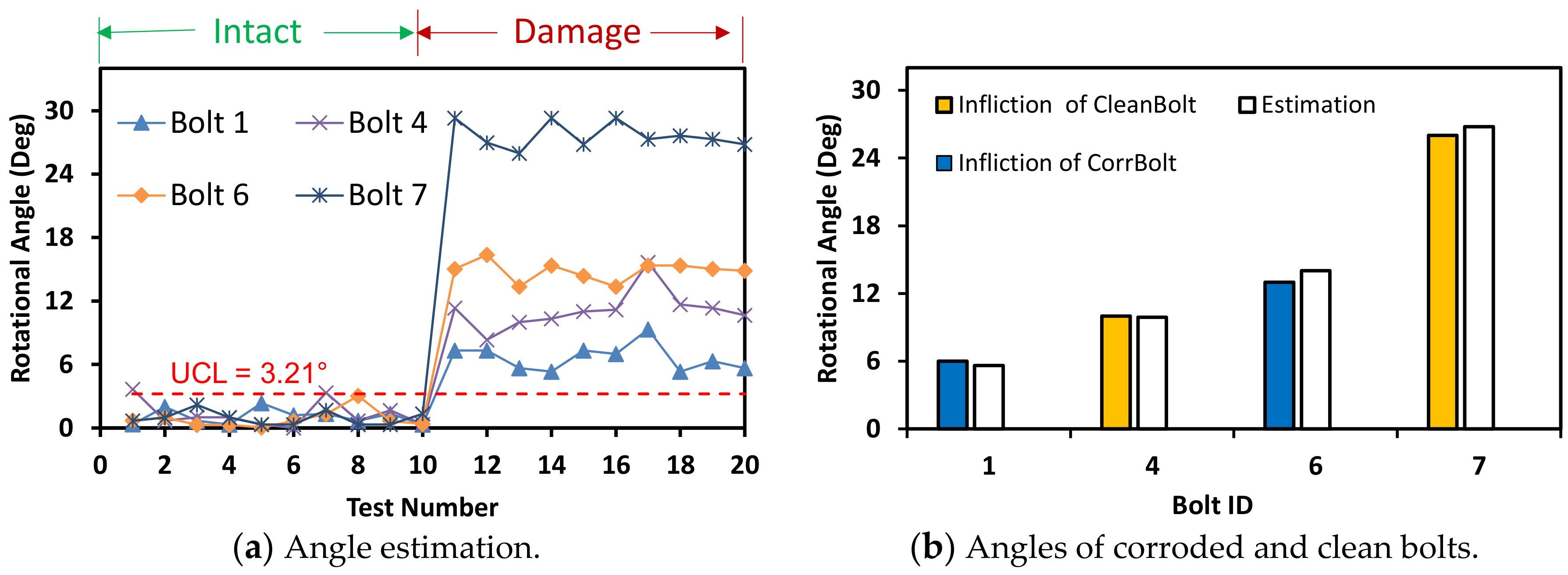
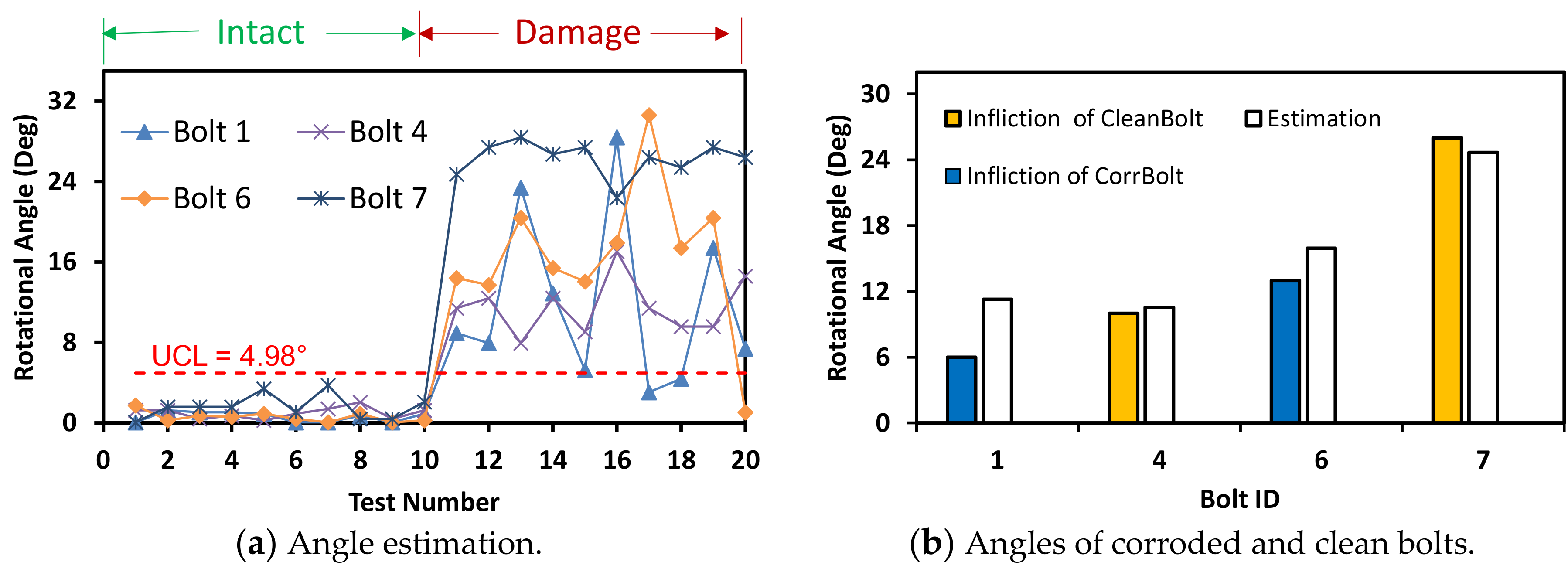
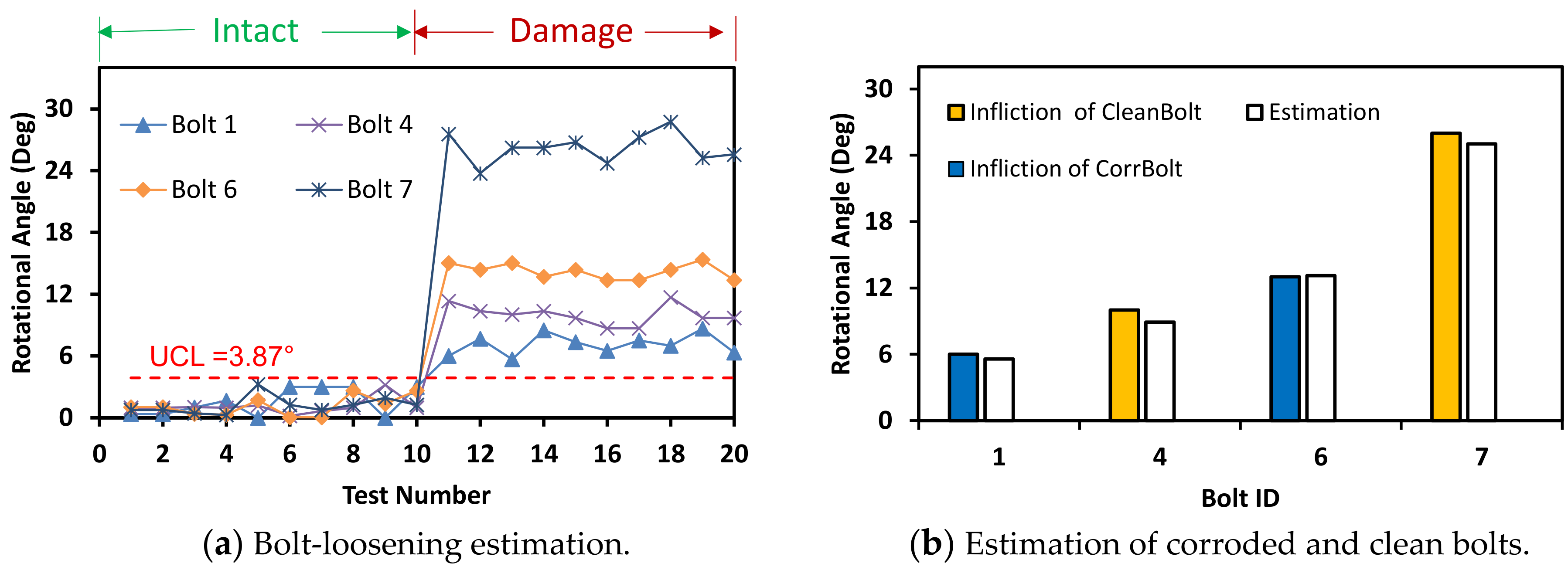
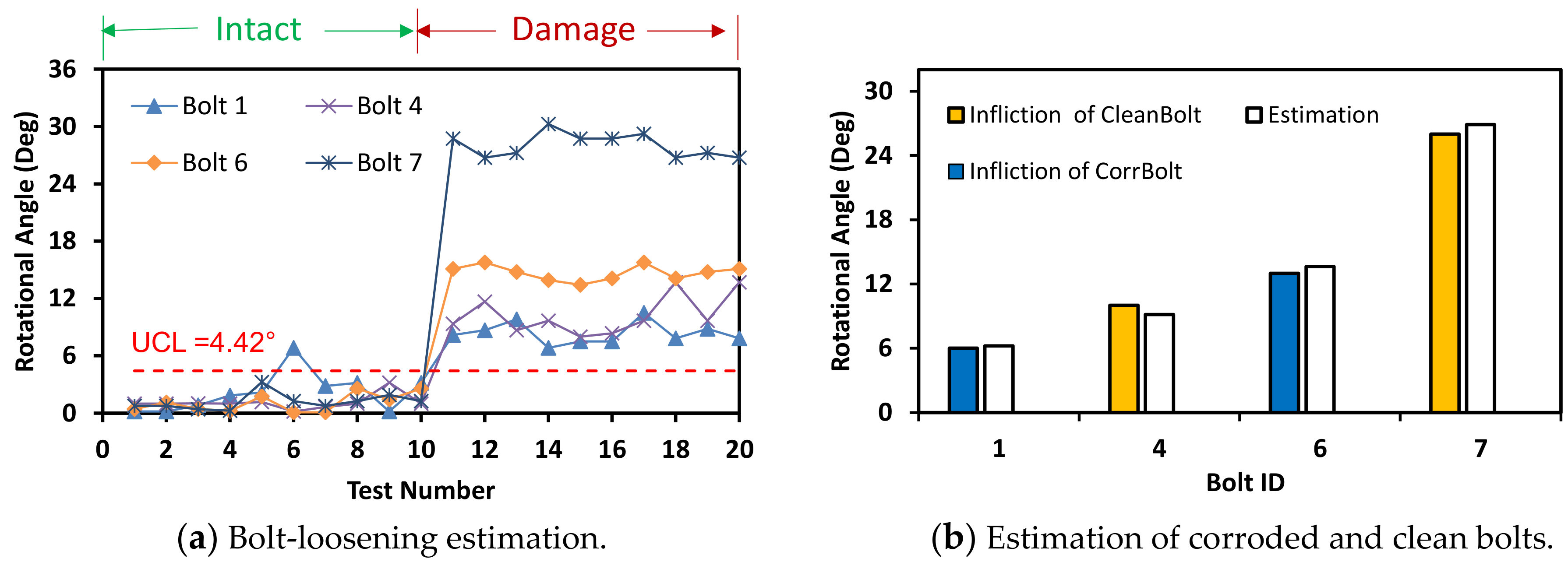
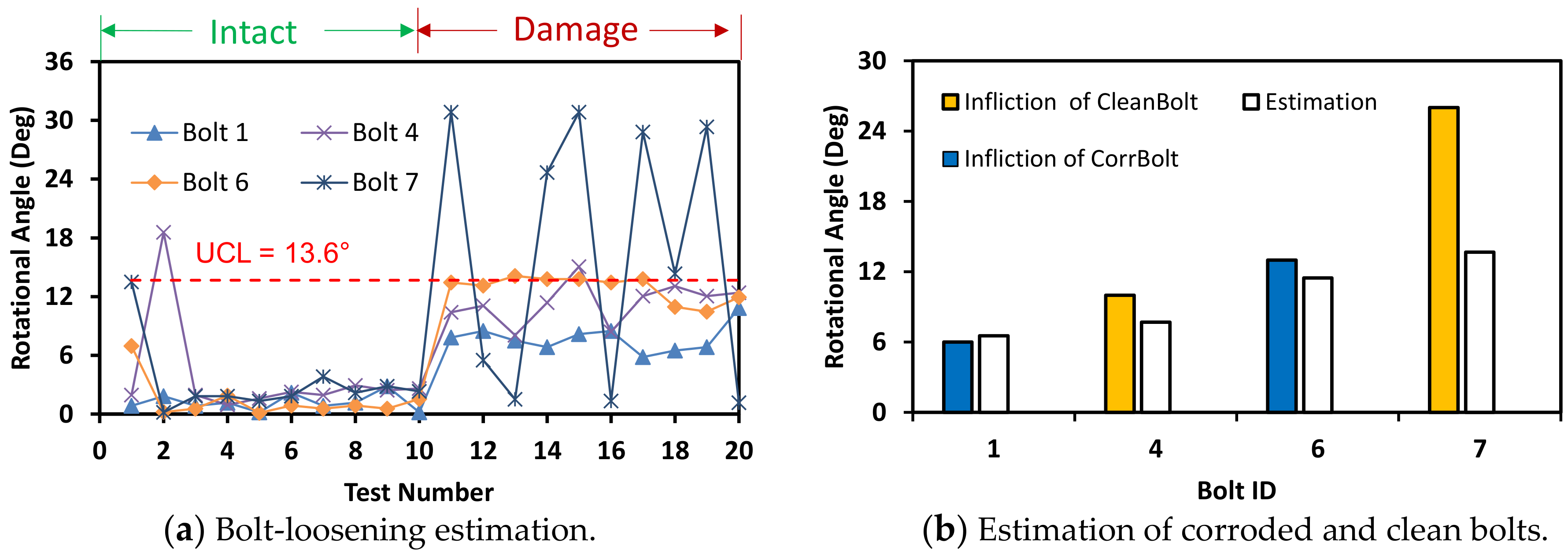
| No. | Layer | Size | Operator | Filter Size | Number | Stride | Padding |
|---|---|---|---|---|---|---|---|
| 1 | L1 | 227 × 227 × 3 | Input | - | - | - | - |
| 2 | L2 | 55 × 55 × 96 | Conv1 | 11 × 11 × 3 | 96 | 4 | 0 |
| L3 | 55 × 55 × 96 | ReLU1 | - | - | - | - | |
| L4 | 55 × 55 × 96 | Norm1 | - | - | - | - | |
| L5 | 27 × 27 × 96 | MaxPooling1 | 3 × 3 | 2 | 0 | ||
| 3 | L6 | 27 × 27 × 256 | Conv2 | 5 × 5 × 48 | 256 | 1 | 2 |
| L7 | 27 × 27 × 256 | ReLU2 | - | - | - | - | |
| L8 | 27 × 27 × 256 | Norm2 | 5 × 5 × 3 | 64 | 1 | 2 | |
| L9 | 13 × 13 × 256 | MaxPooling2 | 3 × 3 | 2 | 0 | ||
| 4 | L10 | 13 × 13 × 384 | Conv3 | 3 × 3 × 256 | 384 | 1 | 1 |
| L11 | 13 × 13 × 384 | ReLU3 | - | - | - | - | |
| 5 | L12 | 13 × 13 × 384 | Conv4 | 3 × 3 × 192 | 384 | 1 | 1 |
| L13 | 13 × 13 × 384 | ReLU4 | - | - | - | - | |
| 6 | L14 | 13 × 13 × 256 | Conv5 | 3 × 3 × 192 | 256 | 1 | 1 |
| L15 | 13 × 13 × 256 | ReLU5 | - | - | - | - | |
| L16 | 6 × 6 × 256 | MaxPooling3 | 3 × 3 | 2 | 0 | ||
| 7 | L17 | 1 × 1 × 4096 | FCLayer6 | 1 × 1 × 4096 | 9216 | - | - |
| L18 | 1 × 1 × 4096 | ReLU6 | - | - | - | - | |
| L19 | 1 × 1 × 4096 | Dropout Layer6 | - | - | - | - | |
| 8 | L20 | 1 × 1 × 4096 | FCLayer7 | 1 × 1 × 4096 | 4096 | - | - |
| L21 | 1 × 1 × 4096 | ReLU7 | - | - | - | - | |
| L22 | 1 × 1 × 4096 | Dropout Layer7 | - | - | - | - | |
| 9 | L23 | 1 × 1 × 3 | FCLayer8 | 1 × 1 × 3 | 3 | - | - |
| L24 | 1 × 1 × 3 | Softmax Layer | - | - | - | - | |
| 10 | L25 | 1 × 1 × 3 | Output | - | - | - | - |
Publisher’s Note: MDPI stays neutral with regard to jurisdictional claims in published maps and institutional affiliations. |
© 2020 by the authors. Licensee MDPI, Basel, Switzerland. This article is an open access article distributed under the terms and conditions of the Creative Commons Attribution (CC BY) license (http://creativecommons.org/licenses/by/4.0/).
Share and Cite
Ta, Q.-B.; Kim, J.-T. Monitoring of Corroded and Loosened Bolts in Steel Structures via Deep Learning and Hough Transforms. Sensors 2020, 20, 6888. https://doi.org/10.3390/s20236888
Ta Q-B, Kim J-T. Monitoring of Corroded and Loosened Bolts in Steel Structures via Deep Learning and Hough Transforms. Sensors. 2020; 20(23):6888. https://doi.org/10.3390/s20236888
Chicago/Turabian StyleTa, Quoc-Bao, and Jeong-Tae Kim. 2020. "Monitoring of Corroded and Loosened Bolts in Steel Structures via Deep Learning and Hough Transforms" Sensors 20, no. 23: 6888. https://doi.org/10.3390/s20236888
APA StyleTa, Q.-B., & Kim, J.-T. (2020). Monitoring of Corroded and Loosened Bolts in Steel Structures via Deep Learning and Hough Transforms. Sensors, 20(23), 6888. https://doi.org/10.3390/s20236888






